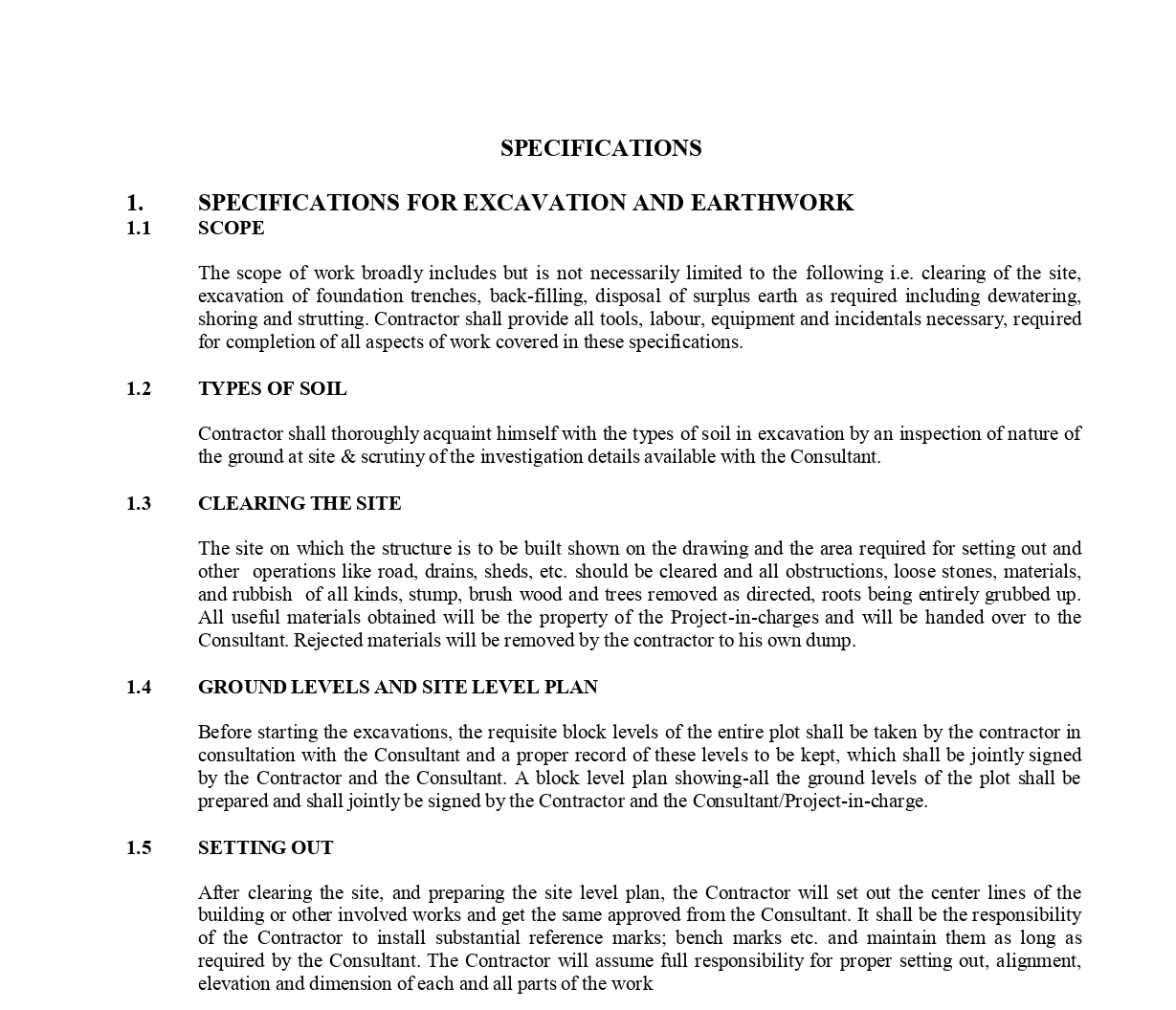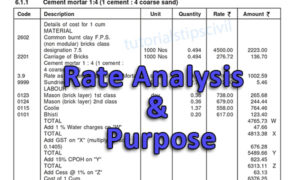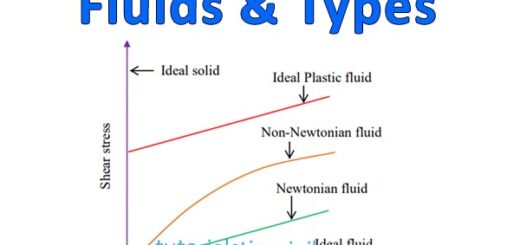Terms used in Contract Document for Civil Construction
Specification of Contract Documents
The ideas of an engineer are converted into reality by an important tool of his profession, namely, the specifications. It deals with the methods of execution, qualities of materials , nature of labor to be employed, proportions, in which materials are to be mixed, measurement of work done etc.
The drawings of a structure will show the proportions and relative positions of its various parts. It is not possible to furnish the data regarding the quality of materials and workmanship on the drawings due to shortage of space. Hence this information regarding the quality of materials and workmanship is conveyed in a separate contract document which is known as the specification for the work. The term is derived from old French word specifier or Latin specific are meaning to describe. Thus, it is inserted that the combination of the drawings and specifications will completely define the structure, physically as well as technically.

Liquidated Damages
The time is the essence in certain contracts. Hence time to complete the work in given more weight in such contracts .In case the contractor fails to finish up the work in the time limit mentioned in the contract, the owner is put in difficulties and has to undergo damages or losses.
The terms damages is different from damages so we should the legal difference between the terms. The term damage is used to mean and to include loss of money, comfort, health or the like. The term damages are used to mean money compensation claimed by the injured party for the injury done. It is very difficult to find out the exact amount of such damages or losses and hence, in contract a definite amount per day of delay in the form of the Liquidated Damages.
The owner may lose his right to the liquidated damages under the following under the following’s circumstances & contract document.
(1) Act of owner – If any act of the owner or his engineer ,not covered up by the terms of contract, was such that it was impossible by the contractor to complete the work in time, the contractor is free from the payment of liquidated damages.
(2) Certificate of Engineer – if the Engineer or architect of the owner gives certificate for satisfactory completion of work in time.
(3) Clause of extension of time: If a provision is made in the conditions of contract for the extension of time.
(4) Original Contractor: The clause for the liquidated damages is applicable to the original contractor during the existence of the contract. If the original contractor is removed, the clause also automatically comes to an end and original contractor cannot be held responsible for any liability.
Mobilization Fund
The starting of a big construction project (Metro line, Bridges, Dams etc.) will require certain initial investment for various items like centering, Tools and Plants, travel of staff and officials from present location to site location, setting up of temporary office, etc. Hence in such cases, the contractor or company is paid a certain amount by the owner even before the actual construction work has been started. This fund is known as the mobilization fund and it proves to be very helpful in the successful implementation of big projects.
Direct and Indirect Costs
From the contractors ‘s point of view, the cost of structure can be divided into two categories, namely direct cost and indirect cost. contract document
(1)Direct Costs: These costs refer to all materials and labor required for constructing the work. Equipment purchases for the particular project also comes under this category.
(2) Indirect Cost: The contractor is carrying out a number of works at a time and there are certain items, the costs of which cannot be imposed on a particular work. These costs are known as indirect costs and include the salaries of the employee, insurance, advertising, expenses on maintenance of Tools and Plants etc. Indirect cost rises with increased duration.






